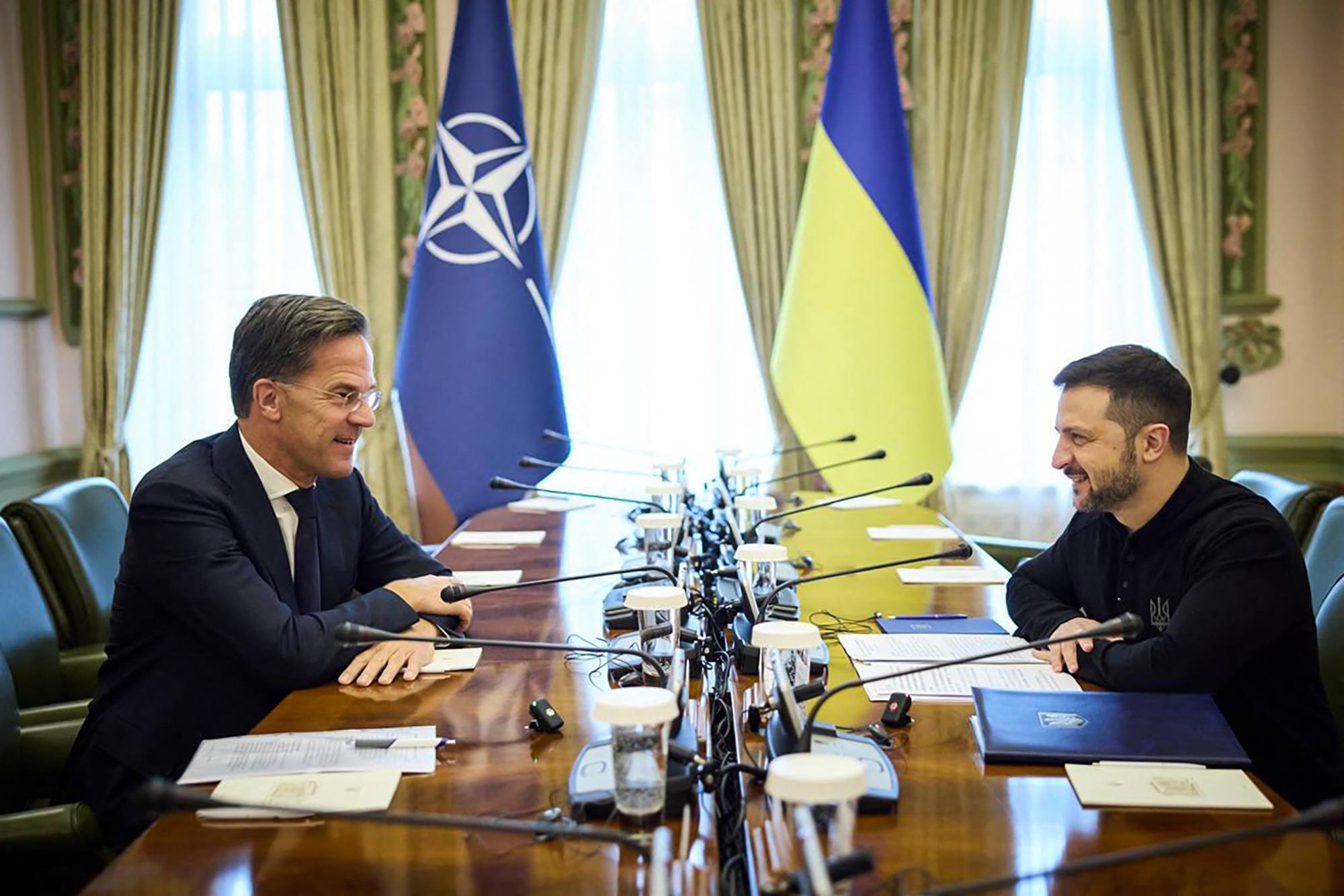NATO chief Rutte visits Kyiv in maiden trip to assert support

KYIV: NATO’s new chief Mark Rutte visited Kyiv on Thursday, a major show of support for Ukraine in his maiden trip in the role. Kyiv relies on billions of dollars in Western military aid to fight the Russian invasion, with the NATO Secretary-General a powerful voice corralling support for Ukraine on the global stage.
Taking over the role on Tuesday, the former Dutch prime minister steps in at a pivotal moment, with Russia advancing on the battlefield, China flexing its growing might, and just weeks before US voters choose a new leader. A staunch backer of Ukraine who has visited the country several times since Russia invaded, Rutte has pledged NATO will continue its support under his stewardship.
“Putin has to realize that we will not give in, that we want Ukraine to prevail in the end,” he said upon taking the role. He also said he wanted to “step up our support for Ukraine and bring it ever closer to NATO.” Ukrainian President Volodymyr Zelensky has welcomed Rutte’s appointment.
“Ukraine’s course toward NATO membership is irreversible, and we remain committed to that goal,” he said on Tuesday.
Rutte’s government in the Netherlands was one of Kyiv’s most important European backers, a major driving force pushing for advanced F-16 fighter jets to be delivered to Kyiv. Rutte was also prime minister when Malaysia Airlines flight MH17 was shot down over Ukraine in 2014, killing 298 people, the majority of them Dutch.
He said the crash “changed my personal view of the world” and made him all the more determined to support Ukraine, “for their security and ours.” But it is NATO members, not the alliance itself, that calls the shots on supplies of much-needed military hardware and ammunition to Kyiv. Zelensky has said that without Western aid Ukraine has no chance of winning the war. He has also chided delays in shipments and criticized restrictions that he says limit Kyiv’s ability to hit back.
Ukraine is currently pushing the United States to allow its army to fire Western-supplied missiles on military targets inside Russia. Cautious to avoid a possible escalation, Washington has been hesitant to give the green light.
Ukraine faces a critical next few months on the battlefield. Russian forces have been grinding through the east for most of 2024 and are targeting the key logistics hub of Pokrovsk. With Moscow’s troops less than 10 kilometers away (six miles), its fall would severely hamper Ukrainian supply routes and defensive positions in the Donetsk region. The country also faces possibly its most difficult winter of the war.
Russian strikes have battered Ukraine’s energy grid and destroyed swathes of generating capacity, with Kyiv bracing for blackouts that could plunge millions into darkness, cutting off heating and hot water in sub-zero temperatures. Meanwhile the possible return of aid-skeptic Donald Trump to the White House has raised questions about how long Ukraine’s most important backer will carry on supplying and bankrolling its fight against Moscow.
Meanwhile, Ukraine’s armed forces commander General Oleksandr Syrskyi said on Thursday he had ordered defenses to be strengthened in the eastern Donetsk region, a day after Kyiv forces announced they had withdrawn from the town of Vuhledar. Russian troops are steadily inching forward in different sectors in eastern Ukraine despite Kyiv’s surprise incursion into Russia’s western Kursk region in August that it was hoped would slow the advances. Syrskyi said on social media he was working on “one of the hottest front sectors” with the 25th Sicheslav Airborne Brigade.
He gave no details on the exact location but the brigade operates in the Pokrovsk front, an area of intensified Russian assaults. “While working in the brigade, I made a number of decisions aimed at strengthening stability and effectiveness of our defense,” Syrskyi said. — Agencies
















